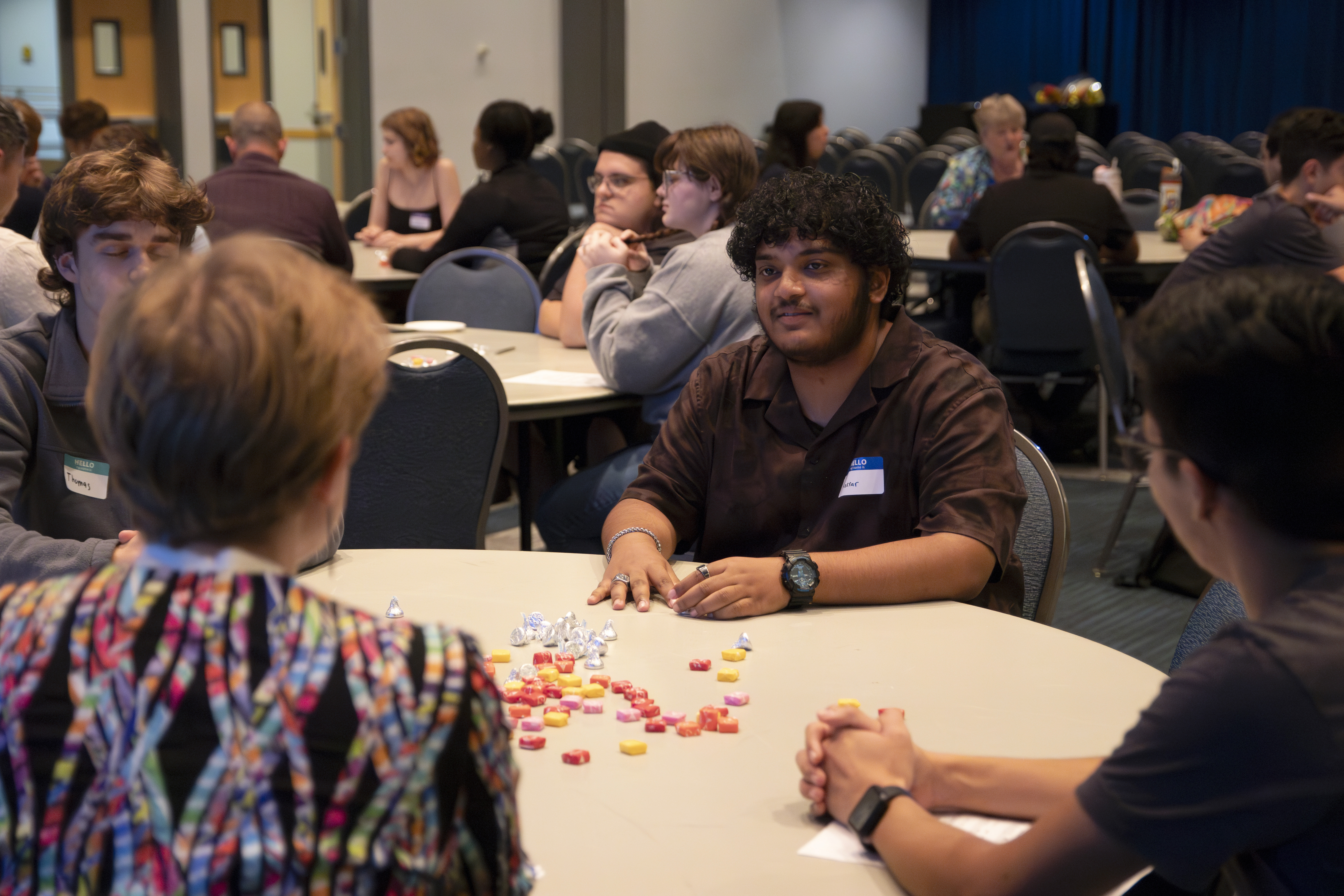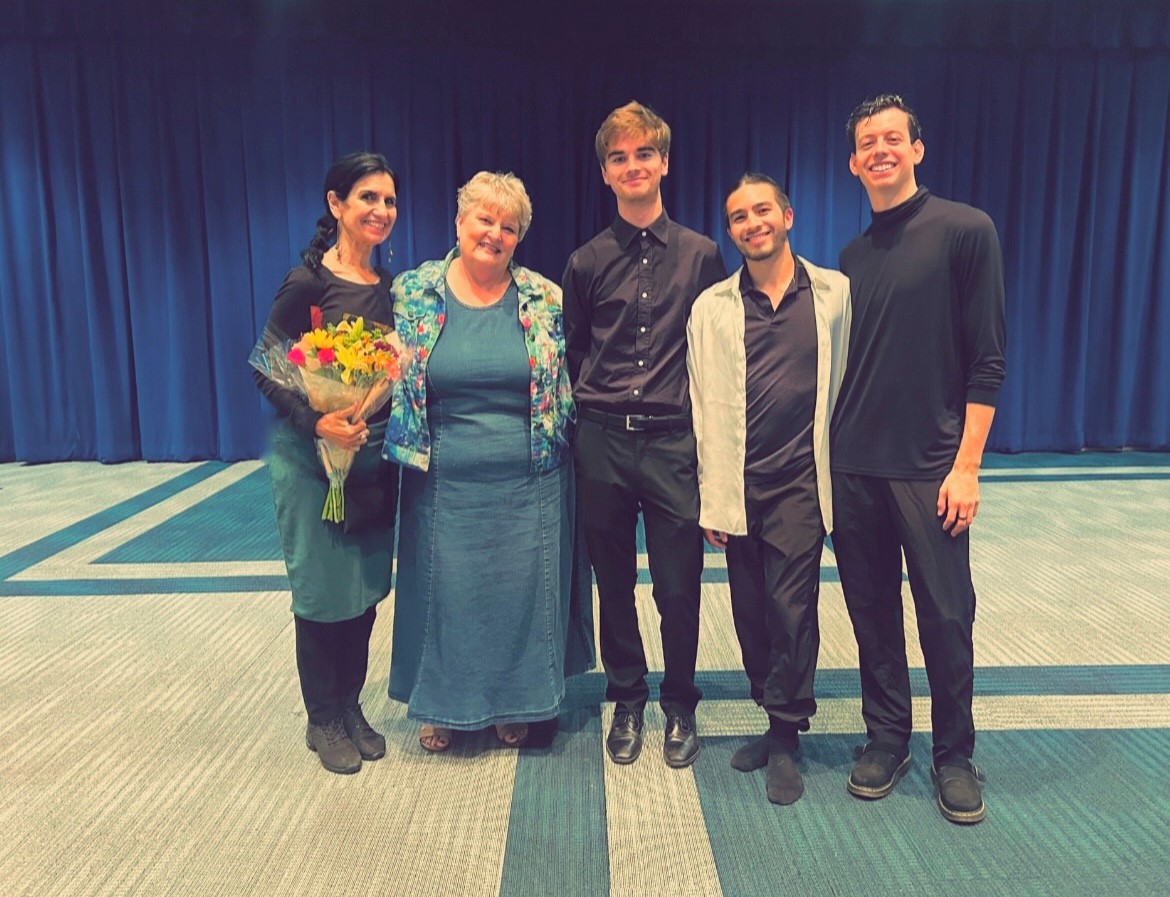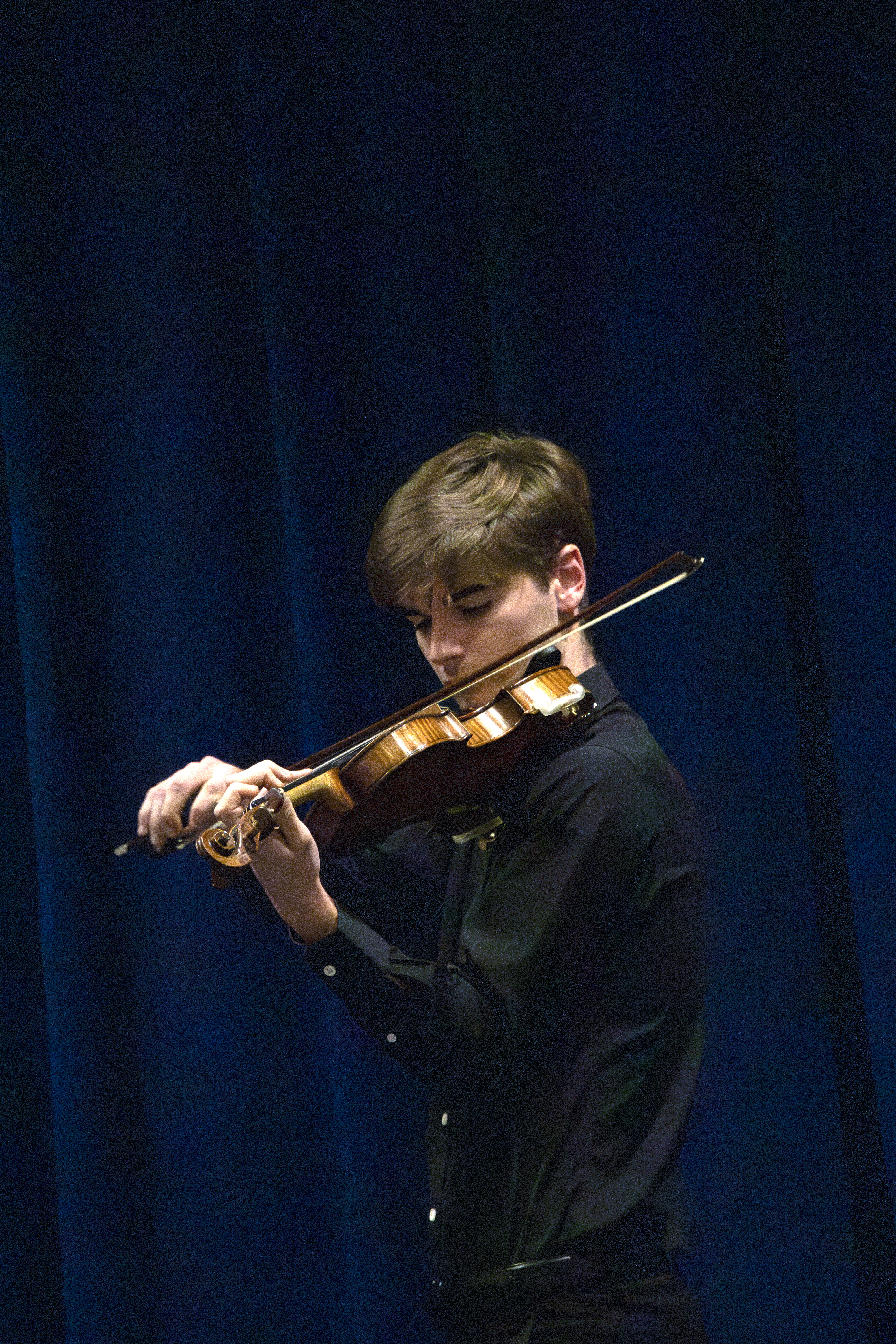 Elijah Richardson dances during an "In-To Light" performance at Sept. 23, 2024 interfaith event at DePaul University. (Photo by Isabel Perkinson/DePaul Student Photo Agency)
Elijah Richardson dances during an "In-To Light" performance at Sept. 23, 2024 interfaith event at DePaul University. (Photo by Isabel Perkinson/DePaul Student Photo Agency)Moving from times of darkness into light is a human experience — one that many have been through in times of grief, stress and transformation. At a recent interfaith event, DePaul community members reflected on and learned about how these themes have propelled their own lives and faiths, while learning about each other.
The juxtaposition of light and darkness “is a truth that faith traditions throughout the world and through the ages have come to know and share in many ways,” said Rev. Dr. Diane Dardón at the Sept. 23 gathering hosted by the Division of Mission and Ministry.
Several faith traditions were represented in the presentation of music, readings and dance. Anchoring the event were two performances of “In-To Light,” a dance choreographed by faculty member
Lin Batsheva Kahn of The Theatre School.
Those gathered watched the performance then listened to readings and songs from the Islamic, Jewish, Sikh and Christian faiths.
 Participants at the interfaith event gathered to discuss their experiences of moving from darkness into light. (Photo by Isabel Perkinson/DePaul Student Photo Agency)
Participants at the interfaith event gathered to discuss their experiences of moving from darkness into light. (Photo by Isabel Perkinson/DePaul Student Photo Agency)
Abdul-Malik Ryan, assistant director for religious diversity and pastoral care, read from the Q’uran and shared that darkness is often mentioned in the plural. “Scholars have commented that this means there are many types of darkness and types of ways we can be separated from the divine or find ourselves going through hard times,” Ryan said. “But there’s always a singular light we are moving towards.”
Student Jaskit Kaur discussed light as a metaphor and symbol in the Sikh faith. Students also sang the Jewish song “Roll Into Dark” as well as the ecumenical Christian song, “Within Our Darkest Night.” After gathering at tables to share their own life experiences, those gathered watched the dancers perform again, this time with the new knowledge of how people from other faith backgrounds and experiences have moved through difficult times.
“In-To Light” grows through collaboration
The concept for the dance came to Kahn, who is Jewish, during a Torah study. “In Judaism we learn about transforming the darkness into light, and I was inspired to show this through innovative choreography,” Kahn says.
She earned a
Vincentian Endowment Fund Grant to collaborate with a CDM film student, a School of Music student, an advanced DePaul dance student and a Chicago dance professional. Recently, the dance was featured at the
Harvest Chicago Contemporary Dance Festival, where it was one of 10 performances selected from more than 100 submissions.
 Lin Kahn, Diane Dardon, student Ben Koenig, and professional dancers Elijah Richardson and Brodie Wolf pose after the Sept. 23 performance. (Image courtesy of Lin Kahn)
Lin Kahn, Diane Dardon, student Ben Koenig, and professional dancers Elijah Richardson and Brodie Wolf pose after the Sept. 23 performance. (Image courtesy of Lin Kahn)At the event, Ben Koenig, a student in the School of Music, played violin to accompany the dancers. While the dance and music are not strictly synced up, Koenig says his music and the dancers have picked up on each other’s performances.
“It’s been really cool for me to see and explore as I’m playing and watching. I get a lot of inspiration from how they’re moving, and that has a lot to do with how I decide to phrase the music in that moment,” Koenig says.
Featuring dynamic partnering, the dance includes fast unison and juxtaposition. As the performance progresses, the confinement of darkness breaks into a space of expansive light.
Kahn was specifically inspired by the words of Rabbi Yitzchak Ginsburg, who said: “our ultimate goal is to sweeten our problems, to transform darkness into light, to create a pure positive state of good and light.” Kahn says she is pleased about the collective efforts with Rev. Dardón to bring forward discussions of rigorous, transformative struggle through art and dialogue.
 Student Ben Koenig performs during the event. (Photo by Isabel Perkinson/DePaul Student Photo Agency)
Student Ben Koenig performs during the event. (Photo by Isabel Perkinson/DePaul Student Photo Agency) Kahn has been teaching in the thriving program at The Theatre School while also running her own company of dancers and musicians. The conservatory program
now offers a dance minor, which is open to students across the university in addition to those planning professional performance careers. Appointed director of the minor, Kahn believes the degree will open up opportunities for more interdisciplinary projects.
“It’s wonderful to have these collaborations within the university supported by grants such as the Vincentian Endowment Fund,” Kahn says.